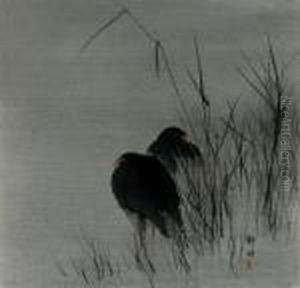Seiko Okuhara Paintings
Seiko Okuhara was a pioneering Japanese female painter, born on November 18, 1867, in what is now part of Tokyo. She was known for her detailed and delicate paintings, often focusing on traditional Japanese subjects. Okuhara came of age during a period of significant cultural transformation in Japan, as the country opened up to Western influences after centuries of relative isolation under the Tokugawa shogunate.
Okuhara's work was deeply rooted in the nihonga style, a term coined during the Meiji era to differentiate traditional Japanese painting techniques from Western styles that were gaining popularity at the time. Her paintings often featured flowers, birds, and other elements of nature, which she rendered with meticulous attention to detail and a gentle, sensitive touch. Despite the era's gender expectations, she managed to receive training in painting, which was a considerable achievement for a woman in Japan during the late 19th century.
Throughout her career, Okuhara Seiko managed to gain recognition and respect in the male-dominated art world of her time. She was particularly noted for her skill in kachoga (paintings of flowers and birds). Her dedication to her craft and her ability to navigate the complexities of a changing Japan allowed her to contribute significantly to the nihonga movement, which sought to preserve and develop traditional Japanese artistic methods and themes amidst rapid modernization.
Okuhara Seiko's contributions to nihonga were recognized by her contemporaries, and she became one of the few women to participate in government-sponsored exhibitions, which were important venues for artists of the time. Her work was exhibited at the prestigious Nihon Bijutsuin (Japan Art Institute) and also at international expositions, helping to introduce Japanese art to a global audience.
Seiko Okuhara passed away on September 28, 1942. Her legacy continues, as she is remembered not only for her exquisite paintings but also for breaking barriers for women in the Japanese art world. Her life and work remain an inspiration for future generations of artists, particularly women, who look to her as a model of artistic excellence and determination in the face of societal challenges.

